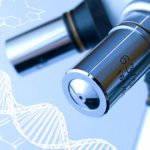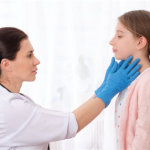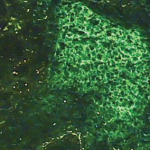The triad of dryness, fatigue & pain
A large percentage of patients present with a clinical pattern totally dominated by severe dryness, fatigue and pain, which are not life threatening, but have a serious impact on the quality of life (see Figure 1). Oral and ocular dryness are key to the diagnosis of SS, because they occur in more than 95% of patients, although other sicca symptoms are also frequent, including hoarseness, non-productive cough, cutaneous dryness and dyspareunia in women. In addition to sicca symptoms, generalized pain and/or chronic fatigue are reported in more than 80% of patients with pSS. Physicians should be alert to women reporting dramatic quality-of-life changes due to the abrupt onset of these symptoms. However, a careful assessment is essential in these patients, because this set of symptoms is also characteristic of other processes (e.g., hypothyroidism, neoplasia, primary depression) and, above all, functional somatic syndromes, such as fibromyalgia.1 Greater intensity of dryness, fatigue and pain seems to go in tandem with less systemic involvement and identification of immunological SS features.3

Nonspecific systemic inflammatory syndrome
Some patients, especially children and the young, may present with a clinical pattern characterized by continued, well-tolerated fever, along with night sweats, fatigue, malaise and weight loss. In these patients, the lack of local symptoms and negligible or absent sicca symptoms may delay the diagnosis. However, a history of swelling of the major salivary glands (i.e., parotid and submandibular glands) may be a key feature. Laboratory tests may show normocytic anemia, mild leukopenia and, especially, a very raised erythrocyte sedimentation rate due to high serum gammaglobulin levels. Systemic infections and lymphoma should always be ruled out in these patients.
The occult Sjögren’s syndrome (non-sicca onset)
Some patients with pSS may present with systemic features unrelated to involvement of the mucosal surfaces.3 A large number of non-sicca features may appear before the development of sicca symptoms, including extraglandular manifestations involving the skin, lungs, kidneys or nervous system, together with some laboratory abnormalities, especially cytopenias, which, in some patients, may be symptomatic (e.g., hemolytic anemia, severe thrombocytopenia). Finally, one specific condition, pSS, presents indirectly: a fetal congenital heart block in the fetus of an asymptomatic pregnant woman, which leads to the discovery of underlying maternal anti-Ro antibodies. A significant percentage of these asymptomatic mothers will develop pSS. In all of these patients, a positive immunological result will lead to an early diagnosis of pSS several years before the onset of an overt sicca syndrome and will help prevent systemic complications (e.g., chronic organ damage, lymphoma) by ensuring their timely treatment.
The Importance of Measuring Systemic Disease
Systemic involvement plays a key role in the prognosis of pSS, and three recent studies, including more than 2,500 patients, have confirmed that pSS is a systemic autoimmune disease.4-6 EULAR has recently promoted an international collaboration among more than 40 experts to develop two consensus disease activity indexes in pSS: the EULAR Sjögren’s Syndrome Patients Reported Index (ESSPRI, a patient-administered questionnaire to assess subjective symptoms) and the EULAR Sjögren’s Syndrome Disease Activity Index (ESSDAI, a systemic activity index to assess systemic complications). The development of the ESSDAI has represented a step forward in the evaluation of systemic SS and includes specific organ-by-organ definitions that allow the homogeneous evaluation of systemic features in large series of patients.7 Preliminary data presented at the 2014 annual EULAR meeting in Paris showed that those patients with the highest level of activity at diagnosis in at least one domain showed a higher mortality rate, as well as those who were classified as having a high baseline score (ESSDAI >13).8
A large percentage of patients present with a clinical pattern totally dominated by severe dryness, fatigue & pain.
Systemic Sjögren’s May Be Life Threatening
Although severe, life-threatening systemic involvement has rarely been reported in pSS, it may account for nearly 10% of deaths.9 Cryoglobulinemic vasculitis is the life-threatening condition more frequently reported in patients with pSS, with the involvement of vital organs, such as the kidneys, the lungs and the gastrointestinal tract. Other severe involvements have been reported, including progressive ataxic neuronopathy, pulmonary arterial hypertension and severe thrombocytopenia or autoimmune hemolytic anemia.


